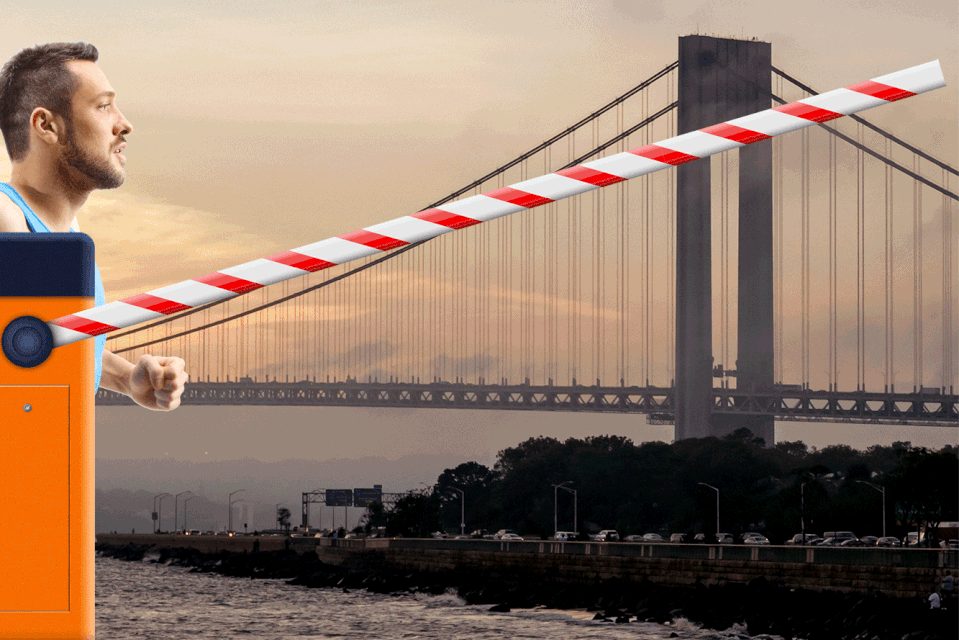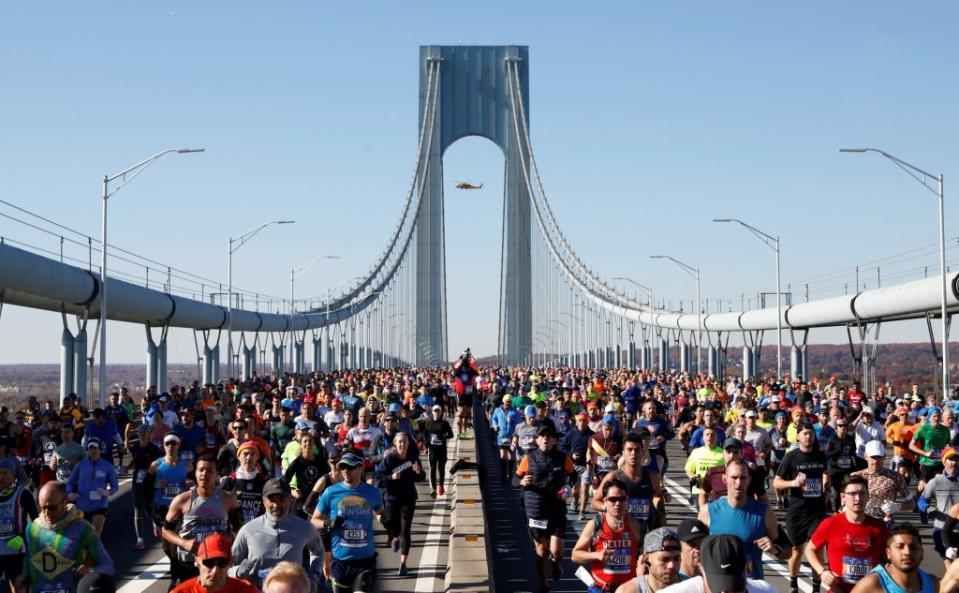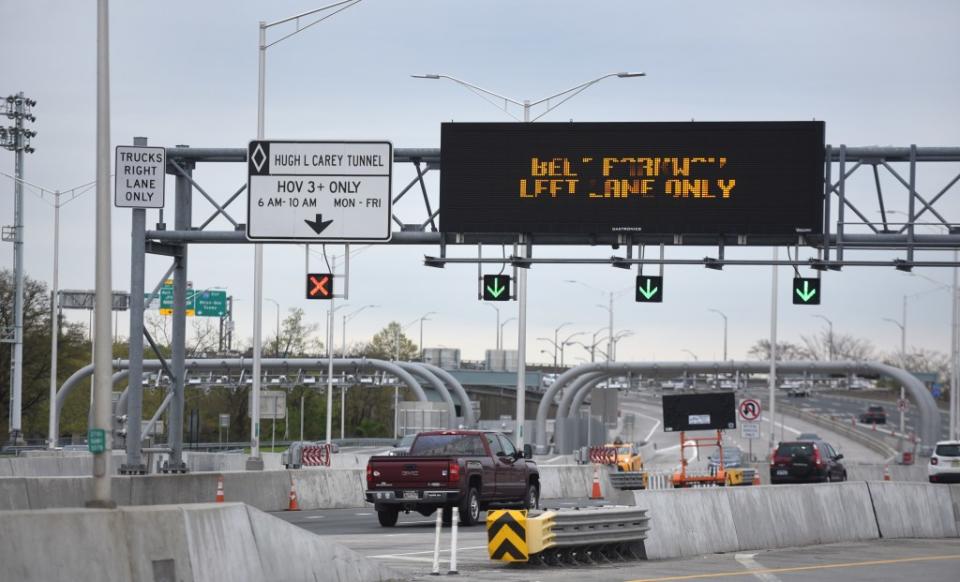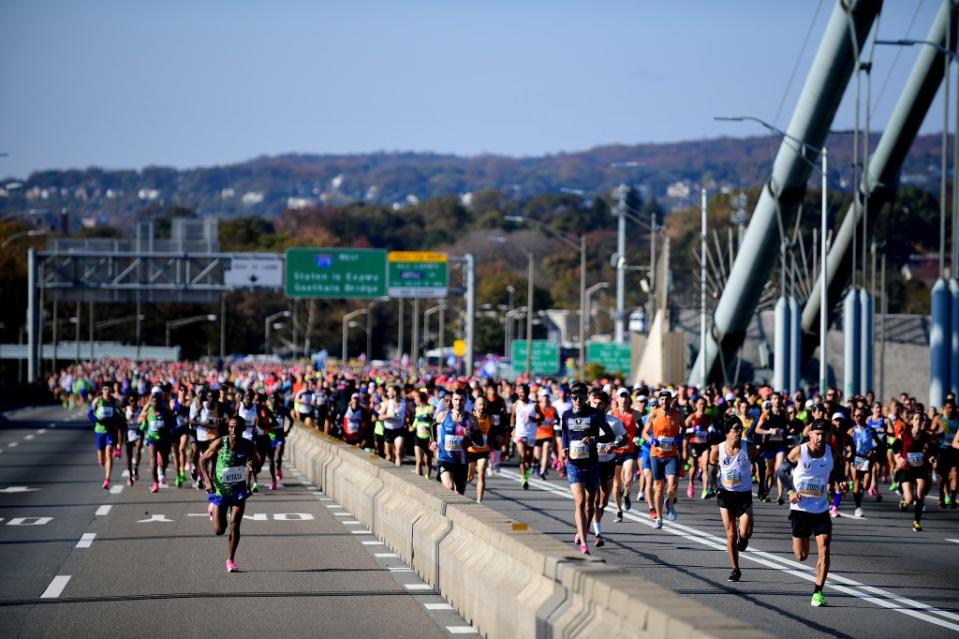MTA demands NYC Marathon cough up $750K toll for crossing Verrazzano Bridge in latest money-grubbing scheme

The MTA is making a mad dash for cash. The latest target: runners for crossing the Verrazano-Narrows Bridge.

The transit agency is waging war against the organizers of the New York City Marathon — demanding $750,000 to make up for toll revenue lost for shutting down the span during the world-famous race.
And if New York Road Runners doesn’t pay up, it’s threatening to restrict use of the bridge, which could reduce the number of runners who can compete.
Negotiations have been underway for months over the NYC marathon – a major event that attracts 50,000 runners and generates more than $425 million each year for the Big Apple.
The marathon even made an additional $1.1 million for the MTA with record high ridership on race day last year, an analysis by The Post shows.

“There’s nothing like Marathon Sunday to show that New York City’s comeback is alive and well,” the MTA’s CEO, Janno Lieber enthused in a statement last November, noting that he personally rode the train five times in order to watch his daughter run the marathon.
The MTA said that it’s just trying to make the organizers of the New York Marathon pay their fair share.
“Taxpayers cannot be expected to subsidize a wealthy non-government organization like the New York Road Runners to the tune of $750,000,” the president of MTA Bridges and Tunnels, Catherine Sheridan, told The Post in a statement.
“The MTA is prepared to continue working toward a final agreement with the NYRR, provided it leads, over time, to full reimbursement for the lost revenue.”
But, critics slammed the MTA for giving the marathon a run for its money, when the system lost $690 million to fare and toll evasion in 2022 — with $46 million in toll-dodging on bridges and tunnels alone.

“They can find that money in nine hours if they enforce the law,” Staten Island Borough President Vito Fossella told The Post.
As the negotiations have unfolded, the MTA initially threatened that runners — who start the marathon on Staten Island — would only be allowed to use the darker lower deck of the bridge for the 26.2-mile race if organizers don’t pay up.
Officials backtracked slightly, though, in recent weeks by saying marathon organizers could have their pick of the upper or lower level for the race — but not both.
The marathon has used both decks of the Verrazzano bridge for the past 36 years.
New York Road Runners — which reported a total income of $100.2 million last fiscal year — hasn’t yet caved to the MTA’s demands and, instead, is asking Gov. Kathy Hochul to step in.
They’ve argued they’ll have to likely restrict the number of entries going forward if runners are banned from using both levels of the bridge.
Otherwise, the race’s duration will have to be extended — meaning the bridge and local streets will be shuttered for longer to allow all runners to complete the race, according to the memos.
In a February letter, CEO Rob Simmelkjaer asked Hochul to force the MTA to “negotiate in good faith” – arguing the non-profit has already agreed to boost its payments to the MTA to cover the bridge’s closure to $200,000 for this year’s race.
“We have agreed to increase payments to the MTA in the form of both direct payments and the purchase of advertising on subways and buses. The MTA has made few concessions in these negotiations, however, and continues to insist on 100% reimbursement of lost toll revenue,” Simmelkjaer wrote.
In 2021, New York Road Runners started paying some costs tied to shutting down the bridge for the marathon. For last year’s race, the group said it forked over $150,000.

Soggy runners in Central Park on Wednesday said they think the MTA should beat feet.
“It’s a bummer. I think a lot of people won’t be able to run who want to,” Sunder Ramkumar, 45, told the Post.
“I don’t know the whole picture, but it feels like — of all the things getting squeezed — that’s a bummer.”
One New York Marathon veteran added it felt like the MTA was picking on runners when it had bigger problems.
“The larger issue is the MTA’s budget management.”Chris, 54, said. “It’s not good to discourage something that’s an athletic pursuit, particularly given the amount of tourism and income it generates.”.
Runner Steven Vinnie, 25, added: “I think it sucks a bit. We’re already paying a high fee for the marathon.”To that point, some MTA advocates said that it wouldn’t be too much added burden for marathon runners to cover the full amount.
To that point, some MTA advocates said that it wouldn’t be too much added burden for marathon runners to cover the full amount.
“The $750k in question could be covered by adding $15 to a $315 entrance fee,” the Riders Alliance, a membership organization of subway and bus riders, posted — noting it would be a less than 5% increase.
But, New York Road Runners pointed out that the marathon was a moneymaker for the MTA overall — and for the city. An economic impact report on the 2019 marathon found it generated $427 million for the city.
And MTA data shows that the 327,000 additional riders on race day last year netted the system $300,000 — even accounting for the $750,000 toll loss.
“I thought I was doing everything I could to make MTA brass look out-of-touch,” raged City Councilmember Joe Borelli, (R-Staten Island), “but the board hit this one out of the park all by themselves.”

